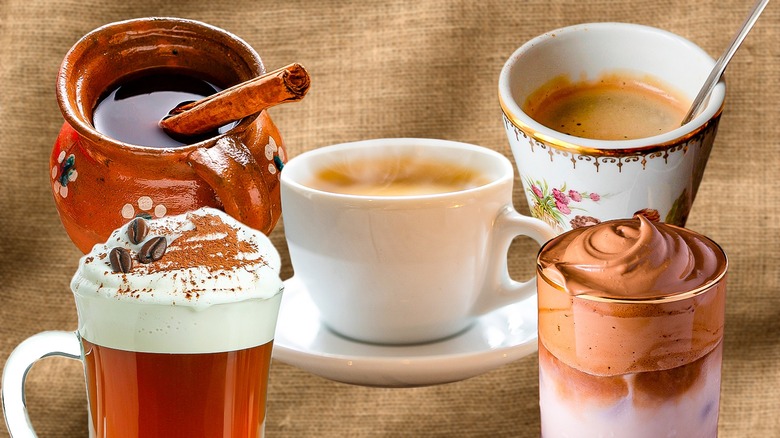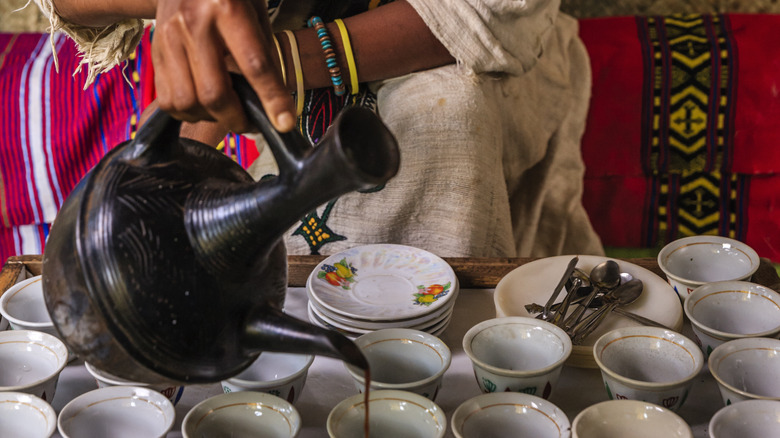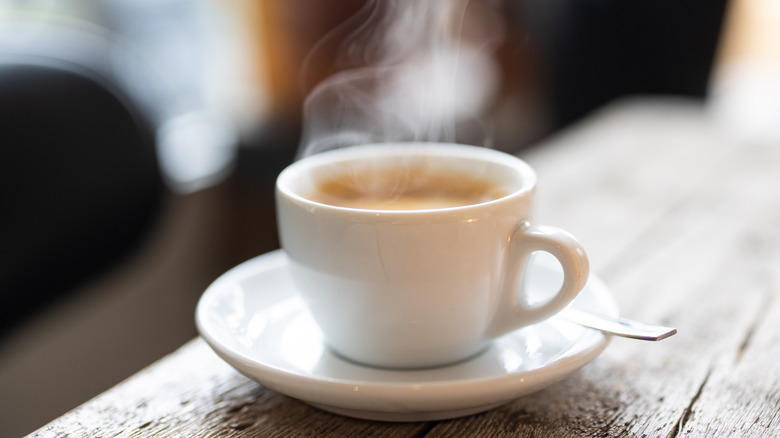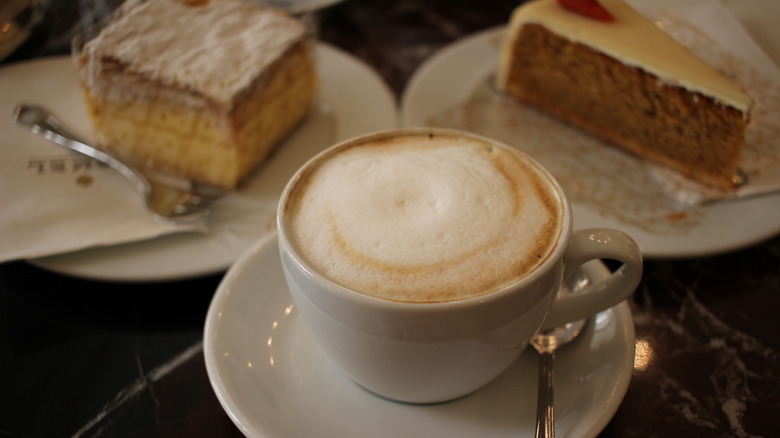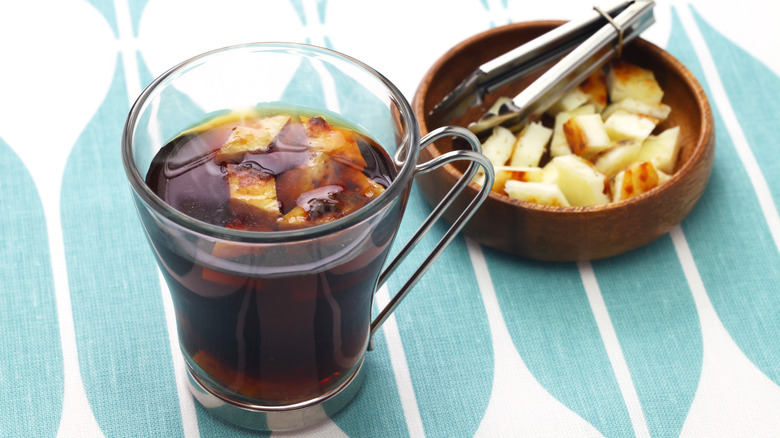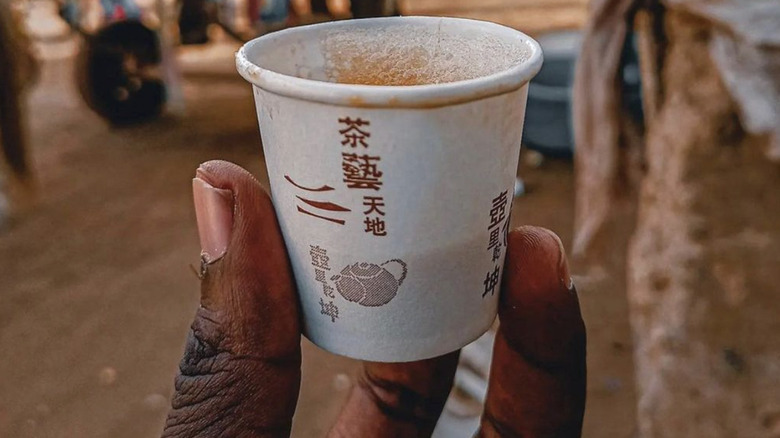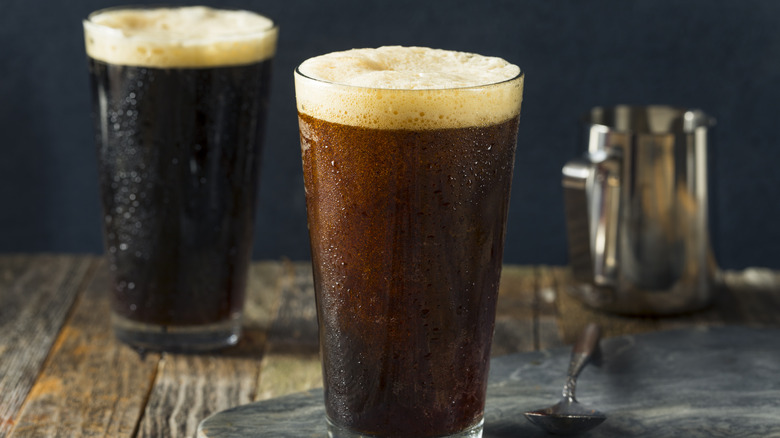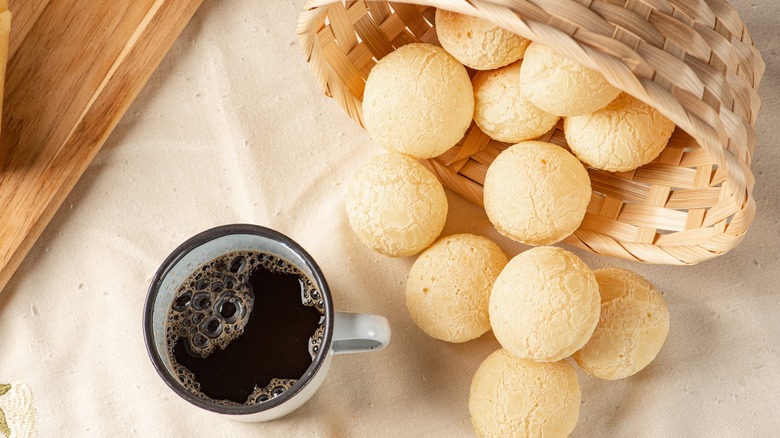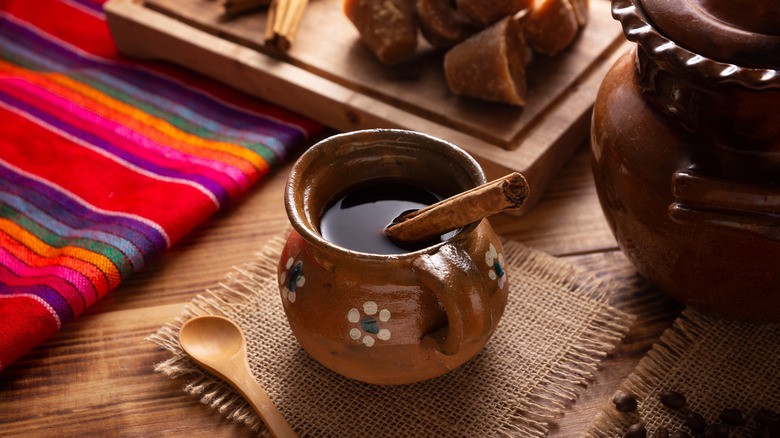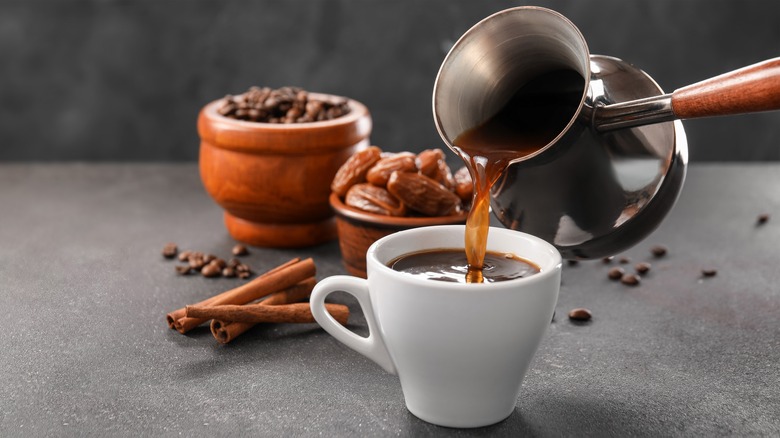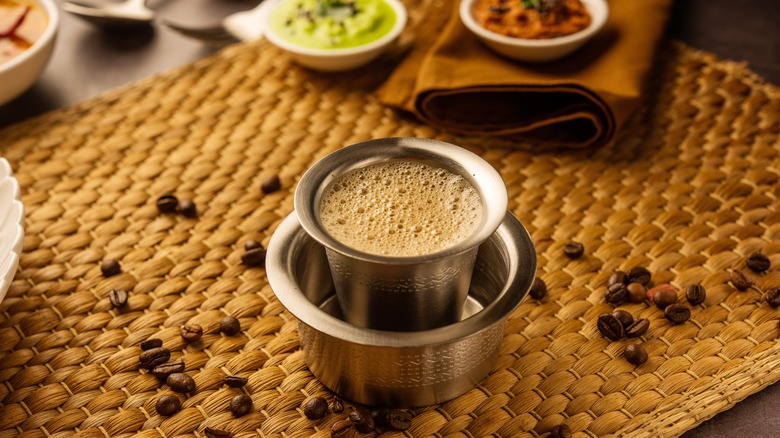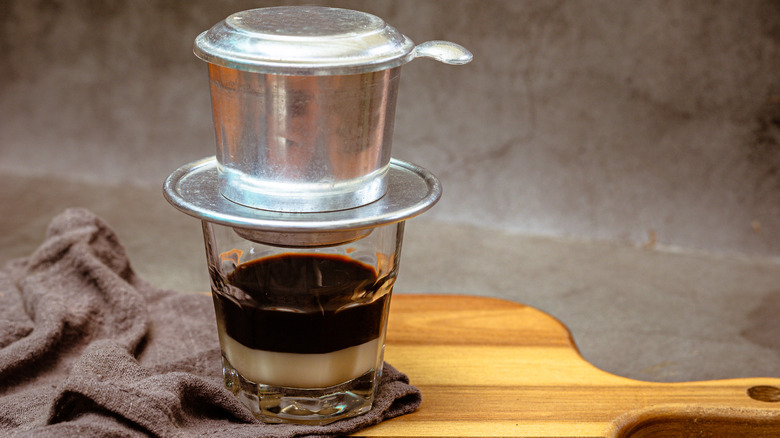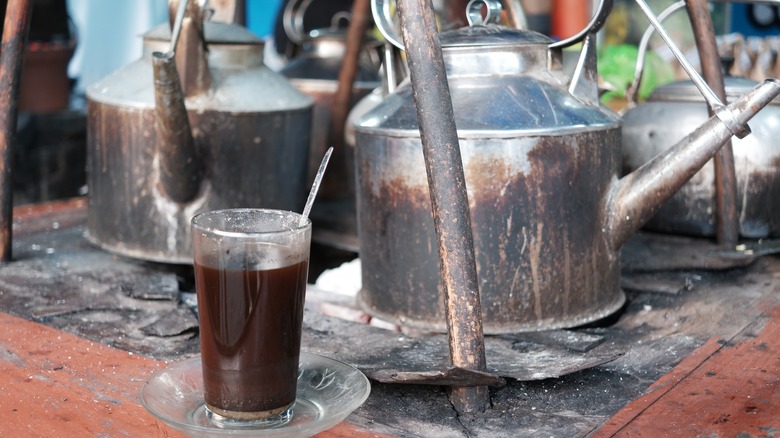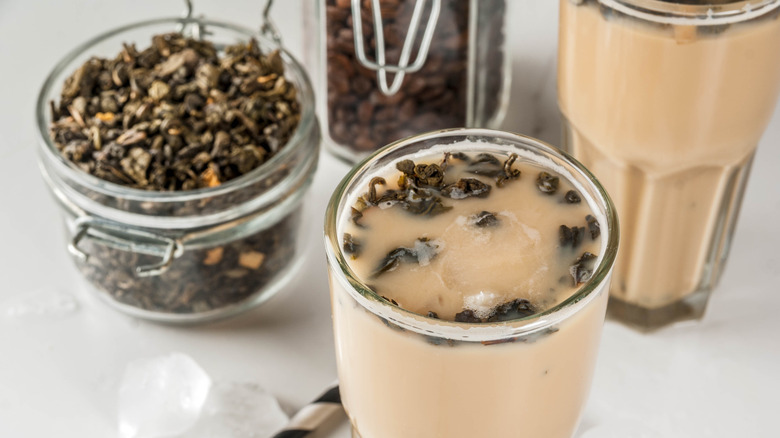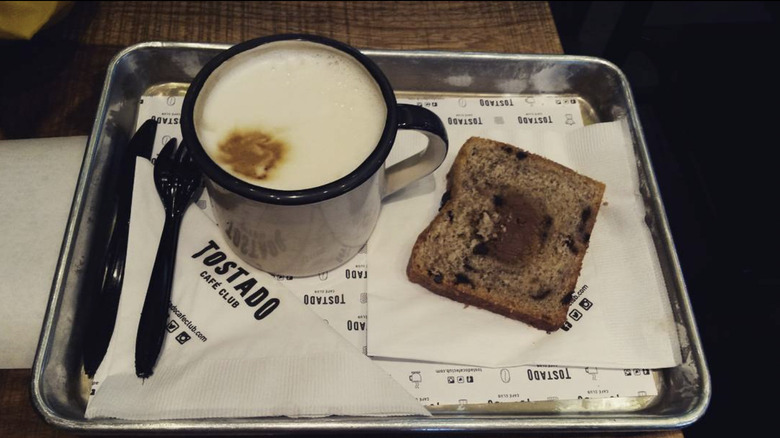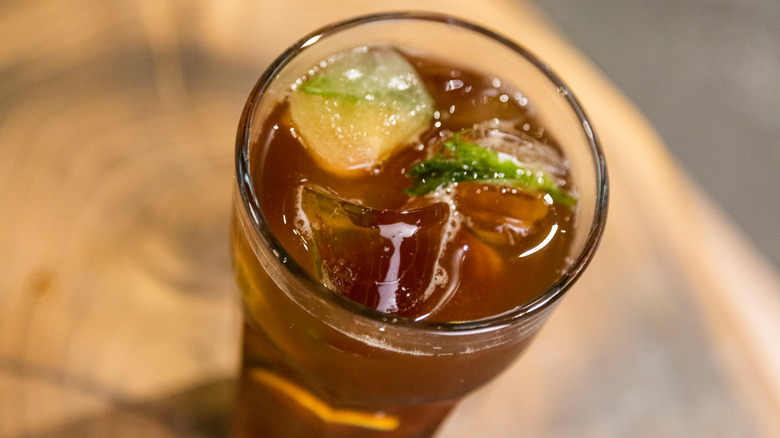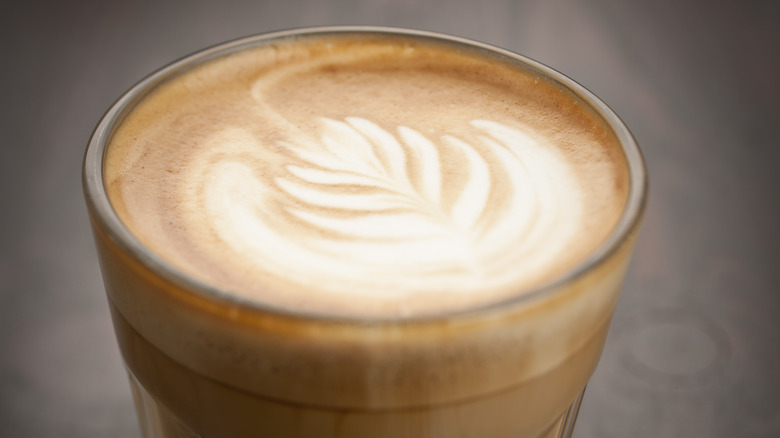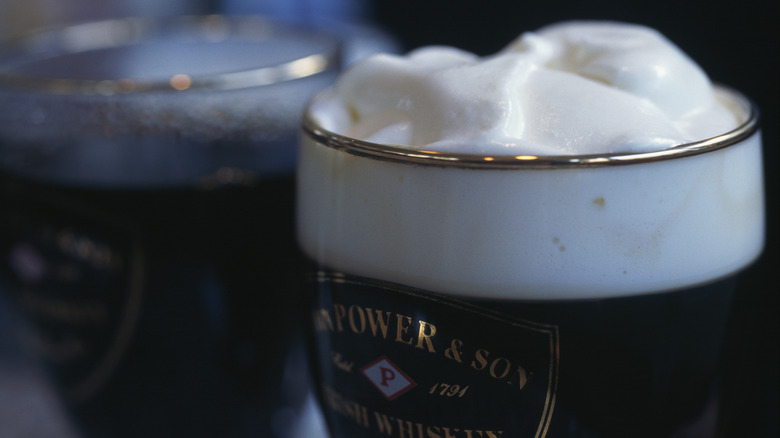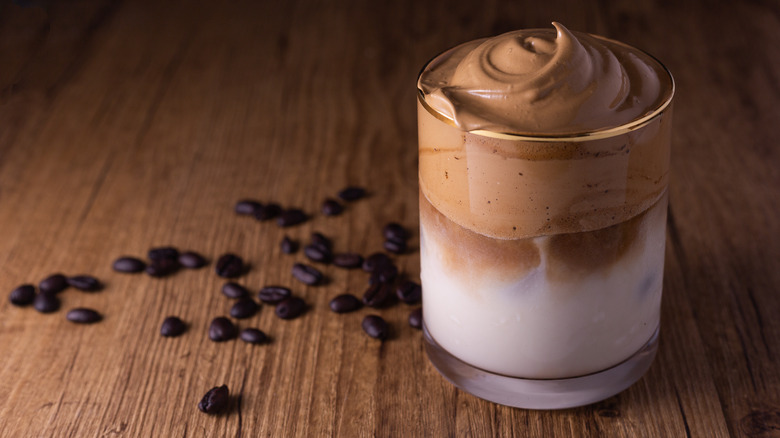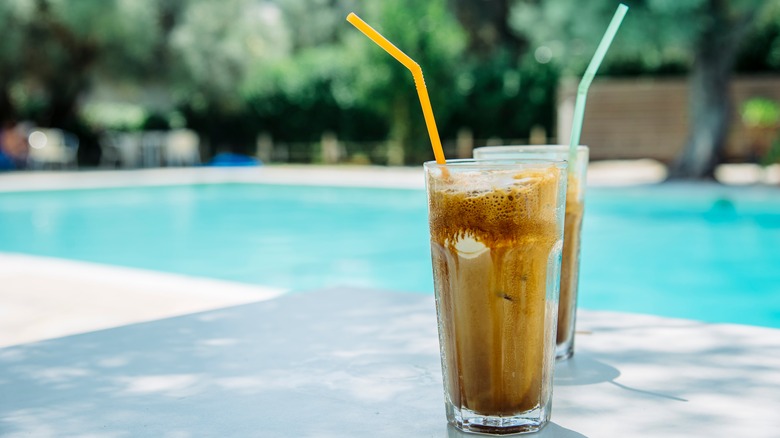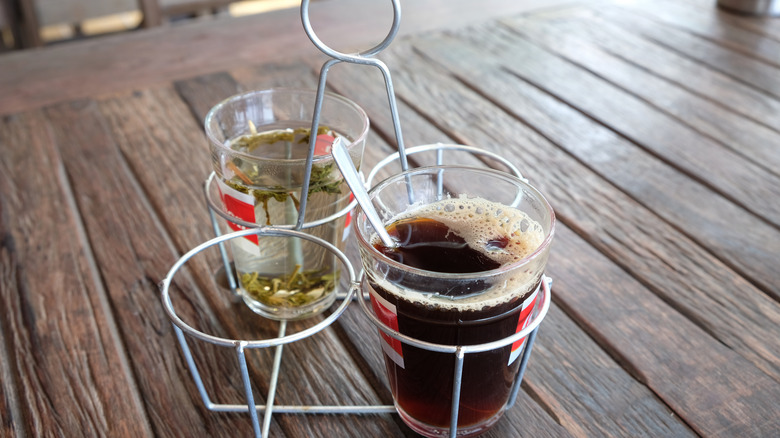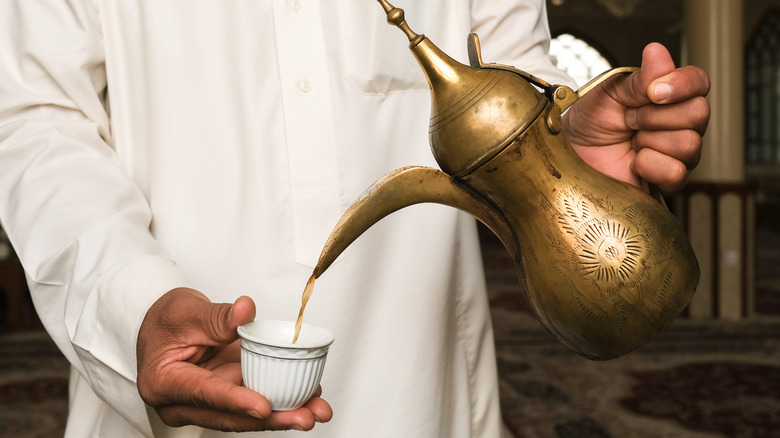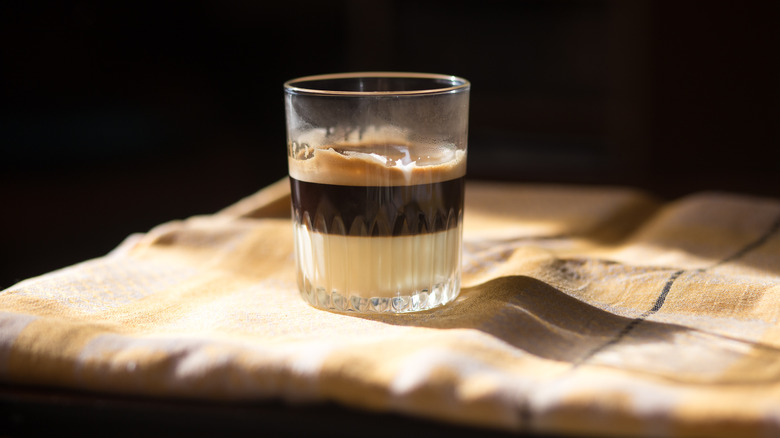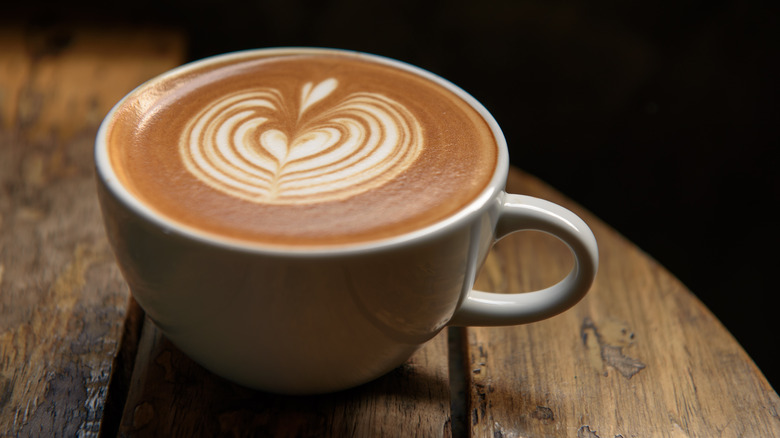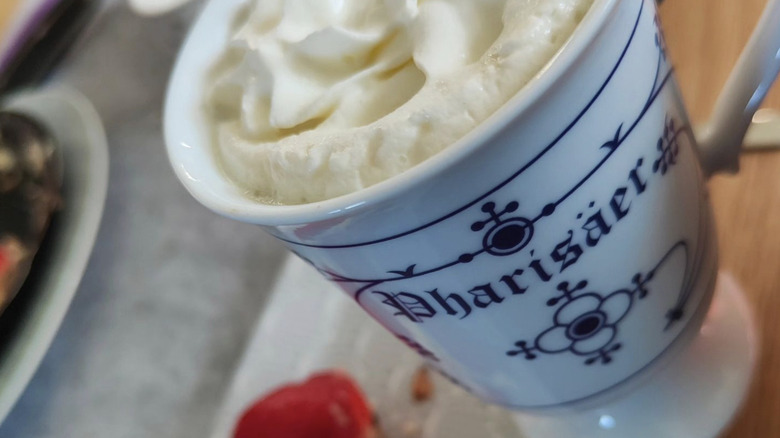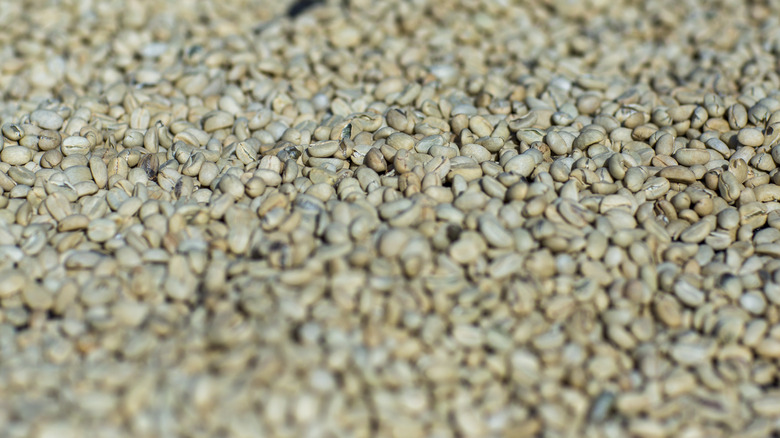25 Ways Coffee Is Enjoyed Around The World
When was the last time you drank coffee? The National Coffee Association reported in 2020 that seven out of 10 Americans drank coffee every week, with the average American coffee drinker consuming about three cups per day. And when was the last time you made coffee for yourself? Home brewing is more popular than ever, with sales of single-cup coffee machines increasing by more than 50% in the last five years. Since the global increase in coffee consumption that began in the 19th century and the proliferation of cafes and coffee shops in the late 20th century, historians believe we are in the middle of a third wave in modern coffee history, marked by increased consumer interest in coffee's origin and production.
But understanding the different types of coffee goes far beyond which brand you buy or how dark the bean was roasted. As this essential beverage has spread around the world, countless ways of making and serving it have been developed. From the traditional to the modern, here are ways coffee is prepared and enjoyed in different countries.
Buna (Ethiopia)
The historic origins of coffee itself go back to Ethiopia, where coffee preparation and consumption is still an important social ritual. In the Ethiopian coffee ceremony, bunna or buna, Amharic for coffee, is processed according to a procedure that takes two or three hours.
It's traditionally performed in the home up to three times per day and for important occasions to welcome guests. Beans are roasted and ground by hand before being blended with water and poured from a spouted vessel in a long stream. Ethiopian coffee is usually drunk black, sometimes with sugar, and may be flavored with spices or with salt, honey, or butter.
Espresso (Italy)
In Italy, espresso is the most-popular coffee, often referred to simply as "caffé" and served during the day and after meals, unlike milk coffee drinks, which are consumed only at breakfast. For a higher price, you can enjoy your espresso at a table with a pastry, but Italians often drink theirs in a few sips while standing at the bar.
All coffee is made from Arabica or Robusta beans, but it's the processing that makes espresso taste different. Compared with most coffee, espresso is roasted longer, ground more finely, and steeped longer. Longer roasting time releases more of the coffee's natural oils, giving espresso a richer flavor and creating a layer of foam on top known as crema. The longer steeping time is due to the extra-fine grounds, which slow down the passage of water.
Melange (Austria)
The coffeehouses of Vienna serve dozens of drinks that combine coffee with dairy, chocolate, liqueur, and other ingredients, but the most typical choice is the melange, made from coffee, milk, and milk foam. Italy's cappuccino is similar but uses only espresso and milk foam. While Italians consider cappuccinos and other milk coffee drinks to be morning beverages, Austrians enjoy melange at any time of day.
French "café viennois" and English "Viennese coffee" do not refer to the melange but to espresso topped with whipped cream. In Austria, this is called a Franziskaner ("Franciscan"), because the pale brown color resembles a Franciscan monk's robe, similar to how the cappuccino was named for the robes of Capuchin monks.
Kaffeost (Scandinavia)
In the northern parts of Finland, Sweden, and Norway, cheese is placed at the bottom of a mug, traditionally one carved out of birchwood. Hot coffee is poured over the cheese, and drinkers can choose to spoon out the partly-melted, coffee-soaked cheese as they enjoy their drink, or save it until the end.
The specific cheese used for this delicacy is lightly sweet and has a firm, dense texture similar to Greek halloumi. Its Finnish name, juustoleipä, means "bread cheese," not only from the cheese's appearance and texture but from its being used like wheat bread, especially in the Arctic where wheat was hard to come by. It can also be toasted and spread with jam.
Café Touba (Senegal)
Senegalese café Touba gets its earthy, peppery flavors from an African spice called djar, and sometimes other spices like clove and cardamom. These are roasted and ground in a ratio of about one part spices to four parts coffee.
Named for the holy city of Touba and originally consumed by scholars, café Touba has become popular throughout Senegal and is even purported to have health benefits. At local snack stands called tanganas, street vendors prepare the coffee from start to finish, pouring it back and forth between containers to aerate it and selling it in small cups.
Nitro cold brew (U.S.A.)
Iced coffee is typically brewed hot, but soaking coffee grounds in cold water for a longer period of time (12 to 24 hours) produces cold brew, a milder, less-acidic beverage with a flavor that doesn't change as much over time. When the cold brew is infused with nitrogen gas, the tiny bubbles give it a velvety texture and a foamy head, similar to beers like Guinness.
Nitro cold brew was invented in 2013 and originally sold by Stumptown Coffee Roasters, but after Starbucks started offering it around 2016, it swiftly became one of the chain's most popular drinks. Its processing makes it expensive, but you can make nitro cold brew at home relatively easily, using a whipped cream dispenser with cartridges of nitrogen.
Cafezinho (Brazil)
In Brazil, the cafezinho reigns supreme as the preferred way to enjoy the beverage. Synonymous with hospitality, cafezinho literally means "a little coffee" and is similar to the standard coffee preparations in other Latin American countries, such as Cuba and Colombia.
Finely ground coffee is added directly to a pot of boiling water, in which unrefined cane sugar, known as panela or rapadura, has been dissolved. Once the coffee brews, it is filtered through paper or, more traditionally, cloth, and served. Cafezinho is brewed strong and commonly served black, but some people add a bit of cream or milk.
Café de olla (Mexico)
What makes Mexican coffee most distinctive is how it's brewed; in a traditional earthenware pot known as an olla. Like many other coffees, café de olla is brewed with warm roasted spices such as cinnamon and cloves, and sometimes with chocolate. An unrefined sugar called piloncillo is used to sweeten the coffee; brown sugar and molasses can be used as a substitute.
Some trace the origins of café de olla to the big earthenware crocks of coffee brewed for soldiers during the Mexican Revolution. It may also be flavored with orange peel, and even combined with alcohol.
Türk Kahvesi (Turkey)
In Turkey, both tea and coffee are popular beverages, but while tea is enjoyed all day, coffee is served in the afternoon or following a large meal. The drink is brewed individually in a special kettle called a cezve.
Turkish coffee relies on extra finely-powdered coffee beans, which results in a different flavor than espresso. Another key difference is that Turkish coffee is made by boiling grounds in a specialized boiler over heated sand, whereas espresso is made by forcing heated water through the grounds. Turkish coffee is unfiltered, so the grounds must be allowed to settle before the thick coffee can be drunk, and there is a custom of reading the fortunes of drinkers in the grounds at the bottom of the cup. It may be enhanced with spices or sugar and is typically served alongside water and a sweet treat.
Filter coffee (India)
While North Indians prefer tea, South Indians have traditionally favored coffee. South India's shade-grown coffee beans are dark-roasted and often mixed with chicory root. The concentrated beverage made from them may be mixed with milk, cream, or sugar, and is known as "filter coffee" because of the unique double-compartmented brewer used to make it.
India is one of the world's largest producers of coffee today, but the majority is still produced in the country's south. Filter coffee remained a regional specialty in India until the 1950s when a chain called India Coffee House introduced it to the rest of the country.
Cà phê sữa đá (Vietnam)
Today, Vietnam is one of the world's largest exporters of coffee, but coffee was first introduced in the 19th century during French colonial rule when French coffee drinkers lacking access to fresh dairy started using tinned condensed milk in their café au lait. The result was the sweet, refreshing drink that English speakers call "Vietnamese coffee," cà phê sữa đá in Vietnamese, which literally means "iced coffee with milk."
It's traditionally brewed with a single-serving press called a phin, which drips the coffee into the condensed milk at the bottom of the glass, after which the mixture is stirred and poured over ice. Both fresh and condensed milk are used in a variation called bạc xỉu.
Kopi joss (Indonesia)
To make kopi joss, a piece of burning wood charcoal is plunged into iced coffee. Kopi means coffee, but joss is said to come from the hissing of the charcoal as it sputters in the liquid.
In addition to a smoky flavor, some proponents of kopi joss claim that the charcoal adds health benefits to the drink, like neutralizing the coffee's acidity to make it easier on the stomach. Kopi joss is a specialty of the city of Yogyakarta on Indonesia's coffee-producing island of Java, invented in the 1960s by a street vendor known as "Mr. Man."
Yuenyeung (Hong Kong)
Yuenyeung is the Cantonese name for the colorful bird known in English as the Mandarin duck. This drink may have gotten its name from the duck's association with marriage and fidelity because yuenyeung is a harmonious marriage of two beverages: coffee and tea.
A blend of the Eastern and Western cultural elements that merged in the 20th century during British colonial rule of Hong Kong, yuenyeung can be found at teahouses throughout Hong Kong today. A Hong Kong cafe called Lan Fong Yuen claims to have invented the drink in 1952, using three parts coffee to seven parts milk tea, but the exact ratio varies.
Café lágrima (Argentina)
Lower-quality cheap coffee imported from neighboring Brazil was once the main coffee available in Argentina, including coffee made using the Torrefacto process, in which inferior beans are roasted with burnt sugar to disguise their flavor. Beverages like the café lágrima originated as a way of balancing and concealing the bitter flavor of low-quality coffee.
Lágrima is Spanish for "tear," and Argentina's café lágrima consists of a single dark teardrop of espresso added, unmixed, to a glass of warm milk. Considered a breakfast beverage, café lágrima is generally made with plain, un-frothed milk in a ratio of nine parts milk to one part coffee.
Mazagran (Portugal)
Sour, bitter, and sweet flavors come together in the Portuguese Mazagran, an iced mixture of coffee or espresso, water, and lemon juice. It may be lightly sweetened or spiked with rum.
Mazagran takes its name from an Algerian town and is said to have been invented by French soldiers in Algeria in the 1830s or '40s. Unable to mix coffee with milk or brandy due to rationing, the soldiers began drinking their coffee with water and later brought this custom back to Paris. Even as the Mazagran's popularity faded in Paris, it spread to other parts of Europe and different countries added their own spin, including Portugal's coffee lemonade.
Flat white (Australia and New Zealand)
Both Australia and New Zealand claim to have invented the flat white, which consists of steamed milk poured over espresso or ristretto, which is similar to espresso but brewed for less time and with less water, resulting in a milder flavor.
Larger than a tiny cortado and less foamy than a cappuccino, compared with a latte, a flat white is creamier and less bitter because of the steamed milk and ristretto. Recently, a variation called "magic coffee" has popped up in Melbourne, named for its supposedly containing the perfect, magical ratio of coffee to milk; magic coffee is served in a 5-ounce cup, rather than the 6-ounce typically used for a flat white.
Irish coffee (Ireland)
Irish coffee begins with a mixture of Irish whiskey, coffee, and sugar. Sugar syrup is recommended over other forms of sugar because it dissolves faster and allows more room for other ingredients. Double cream is carefully poured on top to form a distinct layer, and the coffee/whiskey mixture is sipped through the cream. It's called a Highland coffee when made with Scotch whisky, or a Kentucky coffee when made with bourbon.
There are so many foods with misleading geographic names that you might be surprised to learn that Irish coffee really was invented in Ireland, in 1943. The cocktail attracted international attention in the early 1950s when the Buena Vista Hotel in San Francisco became the first establishment to sell Irish coffee in the U.S.
Dalgona coffee (South Korea)
Named after dalgona, a Korean sweet with a similar appearance, dalgona coffee consists of iced milk topped with a creamy whipped froth made from equal parts instant coffee, sugar, and hot water. The science behind the foam is similar to how egg whites form into meringue: Beating the mixture introduces air bubbles, which are trapped by stretchy protein molecules and sugar. Cheaper instant coffee made by spray-drying, which does not preserve the coffee's natural oils, produces the best foam.
Dalgona coffee was first served at cafes in Asia, but by 2019, it had become popularized in South Korea as an at-home DIY challenge on social media. During the COVID-19 pandemic in 2020, the simple recipe proliferated on TikTok and was picked up by people in quarantine around the world, unable to go out to their favorite coffee shops and looking for fun distractions at home.
Frappe (Greece)
The milkshake-like Frappuccino, common in the U.S. at chains like Starbucks, is made by blending coffee, milk, ice, and flavored syrups. But don't confuse this beverage with the similarly-named frappe, which is more popular as a summertime beverage in Europe, especially in Greece where it originated.
Unlike the Frappuccino, the frappe may or may not include milk and usually has no additional flavorings. The base is a foamy mix of sugar and instant coffee, which whips into a froth similar to dalgona coffee. In some variations, this foam is blended with the ice, but the original frappe was made by pouring the coffee foam over ice cubes. Frappe is said to have been invented at a tradeshow in Thessaloniki, Greece in 1957, by a Nescafé salesman who added instant coffee and ice to a shaker meant for a children's chocolate drink.
Oliang (Thailand)
In Teochew Chinese, oliang means "black and iced," which is how this Thai coffee with Chinese origins is typically enjoyed. Oliang's deep smoky, almost burnt flavors come from the other ingredients roasted and ground with the coffee beans. These may include sesame seeds, soybeans, corn, and rice, as well as spices like cardamom.
Often sold as a powder, oliang may be cooked with sugar into a coffee syrup that can be easily combined with water or milk, and ice to make drinks. Thai iced coffee may also be prepared using a tungdtom, a distinctive filter with an elongated cloth bag nicknamed the "coffee sock."
Qahwa (Arab countries)
Qahwa is traditionally made using a tapered coffee pot called a dallah, which can vary in design depending on which country it comes from. Different countries also favor different roasting levels, with southeastern Arab countries producing the lightest, such as Yemen's "white coffee." Qahwa may be roasted and ground with spices, but spices are also added to the dallah as the coffee brews, especially cardamom.
As Arab merchants helped spread coffee to the world in the 15th and 16th centuries, an elaborate custom of serving coffee to guests developed, similar to practices in Turkey and Ethiopia. The dallah is used to pour the dark, spice-infused coffee into small cups without handles called fenjals.
Café bombón (Spain)
Popularized in Valencia, Spain, this coffee preparation may have been influenced by similar drinks in Southeast Asia. Aside from Vietnamese coffee, Singaporean and Malaysian kopi susu panas and Thai kafe ron are made in much the same way, but using ground coffee instead of espresso.
Like Vietnamese coffee, condensed milk is an essential ingredient in Spain's café bombón, which is made from equal parts condensed milk and espresso. Café bombón is mixed before being drunk, but it's served unmixed in a small, clear glass, so that its contrasting layers create a striking visual effect: dark espresso on top of white condensed milk, sometimes with a third, pale brown layer at the very top from the espresso's natural crema.
Café au lait (France)
Though originally French, café au lait is popular throughout Europe, with different countries having their own variations. In the Netherlands, it's always served with a cookie and made with equal parts coffee and milk, earning the local nickname of "wrong coffee" because it contains more milk than Dutch-style coffee drinks.
The combination of drip coffee with heated milk sets the café au lait apart from similar drinks like the café latte, made with espresso and milk, or the Italian cappuccino and Austrian melange, made with milk foam. Depending on the equipment, heating the milk may create a micro foam that provides a velvety texture. Heating also increases the solubility of the milk's sugar, making it slightly sweeter.
Pharisäer (Germany)
Hailing from Frisia in northern Germany, the Pharisäer is a hot cocktail made with coffee, rum, and sugar topped with a spoonful of whipped cream. Like an Irish coffee, the Pharisäer is not stirred or mixed but sipped through the layer of cream floating on top.
The drink's Biblical name, meaning "Pharisee," used to be German slang for a hypocrite, and legend claims that the Pharisäer was invented at a party to disguise that the guests were drinking alcohol. A variation made with hot chocolate instead of coffee has an equally colorful name: Tote Tante, meaning "dead aunt."
White coffee (Yemen)
Around the world, there are several types of coffee known as "white," such as Malaysia's Ipoh white coffee, made with beans that have been roasted in margarine. In Yemen, white coffee refers to another distinctive roasting process. Whereas coffee beans are usually roasted at a temperature between 450 degrees Fahrenheit and 480 degrees Fahrenheit, white coffee beans are roasted at 325 degrees Fahrenheit for about half the time.
This results in a pale beige bean that is too hard to grind with typical at-home coffee grinders, so it's often sold pre-ground, and may also be mixed with a local spice blend called hawaij. Compared with darker roasts, white coffee has a milder, less bitter flavor, more of certain nutrients, and (according to some) more caffeine.
